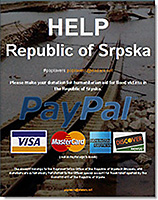| Report of The Secretary-General pursuant to Resolution 844 (1993) |

|

|
| Friday, 15 January 2010 | |||||||||
Page 1 of 7
UNITED NATIONS
Security Council Distr. GENERAL S/1994/555 9 May 1994 ORIGINAL: ENGLISH Report of The Secretary-General pursuant to Resolution 844 (1993) I. INTRODUCTION1. In paragraph 6 of resolution 844 (1993) of 18 June 1993, the Security Council invited the Secretary-General to report on a regular basis on the implementation of that resolution as well as of resolution 836 (1993) of 4 June 1993. The present report is submitted, further to previous reports dealing with the safe areas (S/1994/291 and S/1994/300), in order to inform the Council of the results achieved and lessons learned, as well as to propose some improvements in the short term with a view to ensuring more effective implementation of the concept within the overall goal of restoring peace in Bosnia and Herzegovina. II. INITIAL SAFE-AREA CONCEPT2. Srebrenica was the first safe area declared by the Security Council in its resolution 819 (1993) of 16 April 1993. Subsequently, Sarajevo, Tuzla, Zepa, Gorazde and Bihac and their surroundings were also declared to be safe areas in Security Council resolution 824 (1993) of 6 May 1993. In these resolutions, the safe areas were envisaged to be areas free from armed attacks and from any other hostile acts that would endanger the well-being and the safety of their inhabitants and where the unimpeded delivery of humanitarian assistance to the civilian population would be ensured. 3. In order to ensure full respect for the safe areas, by resolution 836 (1993), paragraph 5, the Council extended the mandate of the United Nations Protection Force (UNPROFOR) to enable it, in the safe areas, to deter attacks against the areas, to monitor the cease-fire, to promote the withdrawal of military or paramilitary units other than those of the Bosnian Government and to occupy some key points on the ground, in addition to participating in the delivery of humanitarian relief. 4. In paragraph 9 of the same resolution, UNPROFOR was authorized, in carrying out its mandates and acting in self-defence, to take the necessary measures including the use of force in reply to: (a) Bombardments against the safe areas by any of the parties; (b) Armed incursion into the safe areas; (c) Deliberate obstruction in or around the safe areas to the freedom of movement of UNPROFOR or of protected humanitarian convoys. |
|||||||||
| Last Updated ( Friday, 15 January 2010 ) | |||||||||


